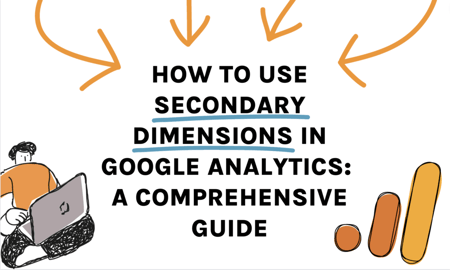Optimize Your Reporting Accuracy With Secondary Measurements
In the world of information analysis, the mission for precision and depth is a perpetual pursuit. Second measurements use a portal to enhancing reporting precision by providing a complex lens where to watch information. Envision the power of unraveling elaborate layers of details that lie past the surface area metrics, using a richer tapestry of understandings waiting to be discovered. As we start this journey of leveraging additional dimensions, the landscape of reporting accuracy beckons with assurances of improved clearness and critical decision-making.
Importance of Additional Dimensions
Using additional measurements is vital for improving the depth and granularity of reporting understandings in data analysis. Second measurements make it possible for experts to segment and filter information based on specific criteria, offering an extra personalized and targeted analysis.
In addition, secondary measurements help in recognizing connections and connections that might not be instantly obvious when assessing information with just primary measurements. This much deeper level of understanding can result in even more enlightened decision-making and tactical planning within an organization. By leveraging second dimensions efficiently, companies can reveal surprise chances, determine locations for renovation, and maximize their general performance.
Executing Secondary Measurements
To include secondary measurements efficiently right into data evaluation procedures, organizations have to embrace a structured technique that aligns with their coverage objectives and logical goals. Implementing second measurements entails selecting the best dimensions that offer deeper understandings right into key data metrics.
Moreover, companies require to make sure that the chosen secondary dimensions relate to the main information and offer meaningful context without creating details overload. Executing secondary measurements likewise requires specifying clear analytical inquiries that the extra dimensions will certainly help address. By structuring the execution process around these considerations, services can make the most of the worth obtained from second dimensions and improve the precision and depth of their reporting.
Analyzing Information With Additional Dimensions

One key facet of evaluating data with secondary measurements is to make sure that the selected dimensions line up with your details logical goals. Picking the right second measurements can provide context and subtlety to your primary data metrics, enabling you to draw even more precise verdicts and make educated decisions based on the insights acquired.
Moreover, leveraging second dimensions effectively can aid in recognizing outliers, understanding the impact of various variables on your vital efficiency indicators, and gaining a thorough sight of your information landscape. By diving right into data with second measurements, you can boost the depth and quality of your evaluation, resulting in more robust coverage and actionable outcomes.

Enhancing Insights Via Secondary Dimensions
Discovering information through additional measurements not only grows evaluation yet additionally amplifies the capacity for revealing useful insights that can dramatically boost reporting accuracy. By adding additional measurements to your records, you can obtain a much more extensive understanding of the connections in between various information points. This enhanced viewpoint allows you to recognize patterns, fads, and correlations that might have been neglected when analyzing data with main measurements alone.

In essence, leveraging secondary dimensions empowers you to draw out richer understandings from your data, allowing you to make even more Visit Your URL informed choices and optimize your coverage precision.
Best Practices for Secondary Dimensions
Utilizing secondary measurements efficiently requires cautious consideration of vital methods to improve data evaluation and reporting accuracy. When carrying out second measurements, it is essential to align them with your main metrics to derive significant insights.
Another essential technique is to explore different combinations of main and additional dimensions to discover special correlations and patterns within your information. This iterative method can reveal useful insights that may have been forgotten otherwise. In addition, it is very important to frequently review and refine why not try here your additional dimension selections to ensure they remain relevant and aligned with your advancing reporting needs.
In addition, recording the rationale behind your selection of second measurements can supply context for future analysis and promote partnership within your group. By following these ideal methods, you can optimize the effectiveness of additional dimensions in improving your coverage precision and driving educated decision-making.
Final Thought
Incorporating secondary measurements in information analysis is vital for making best use of reporting accuracy and gaining deeper insights into performance patterns. By purposefully selecting extra data points, experts can make and discover surprise correlations informed choices. secondary dimensions. Carrying out ideal methods for second dimensions enhances the depth of evaluation and boosts the relevance of reporting outcomes. This strategy eventually causes more nuanced and exact interpretations of information, resulting in more enlightened decision-making.
In addition, second dimensions assist advice in identifying correlations and partnerships that may not be promptly noticeable when analyzing data with just primary measurements. Applying additional measurements entails picking the appropriate dimensions that supply much deeper understandings right into key information metrics. Executing second dimensions likewise requires defining clear logical questions that the added measurements will help address.When assessing data with second measurements, it is essential to concentrate on extracting useful understandings that match key data metrics. By including additional measurements into your analysis, you can reveal patterns, fads, and relationships that may not be obvious when looking at the information from a primary dimension alone.